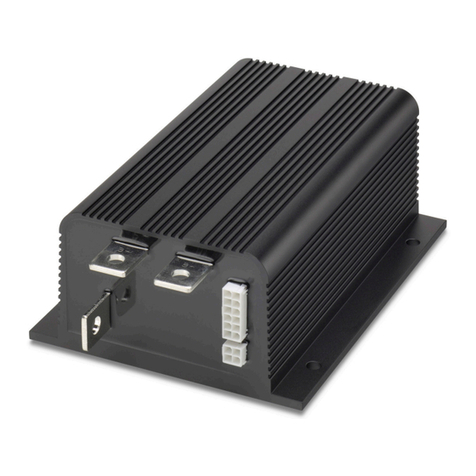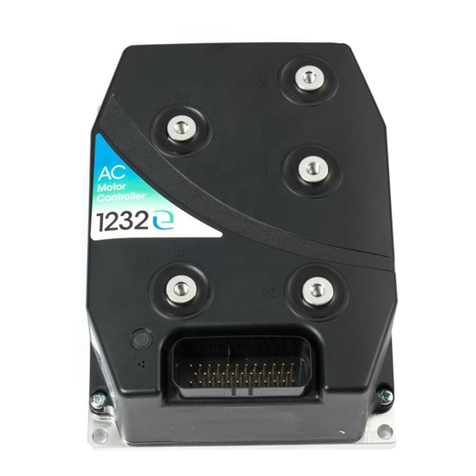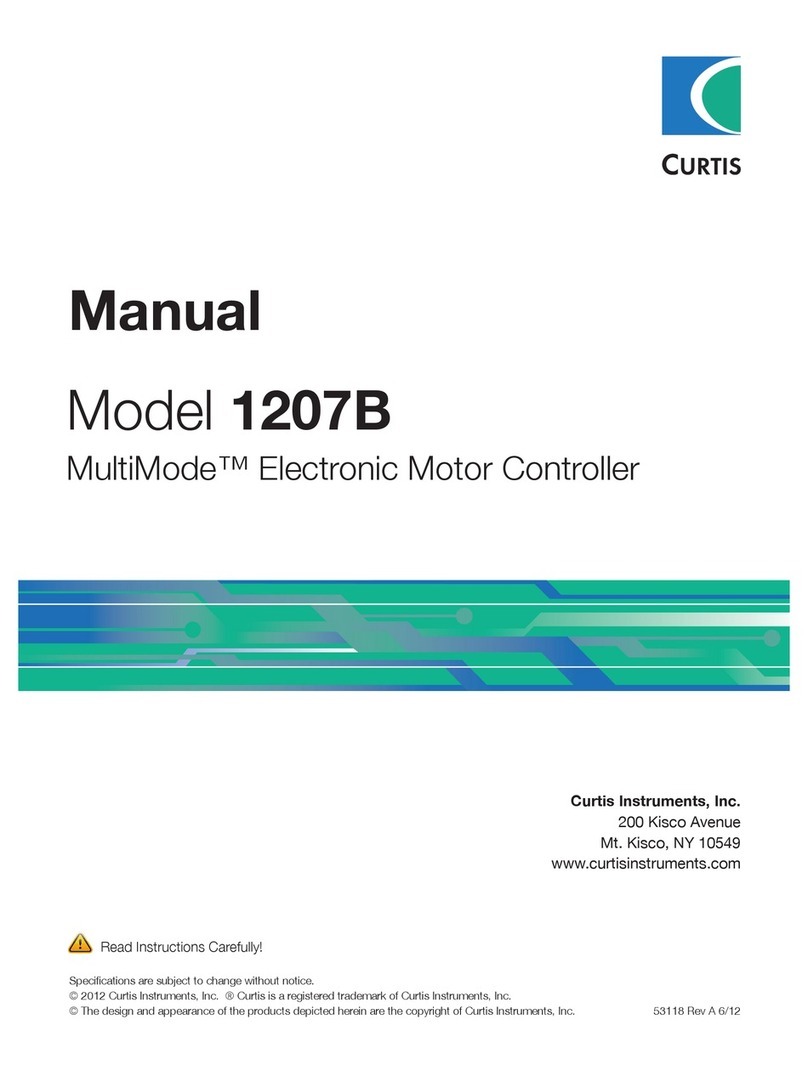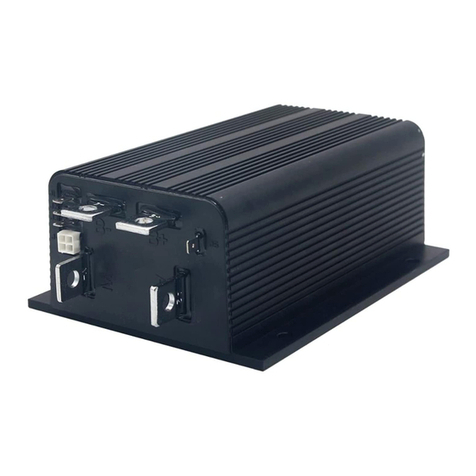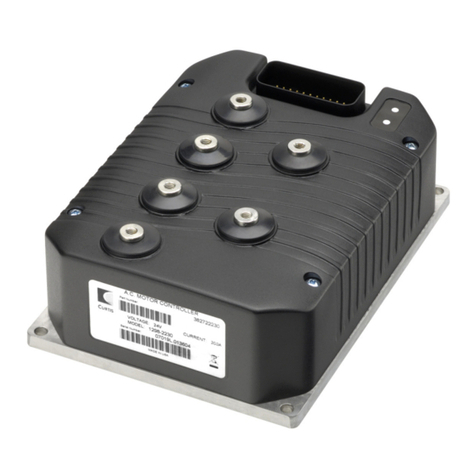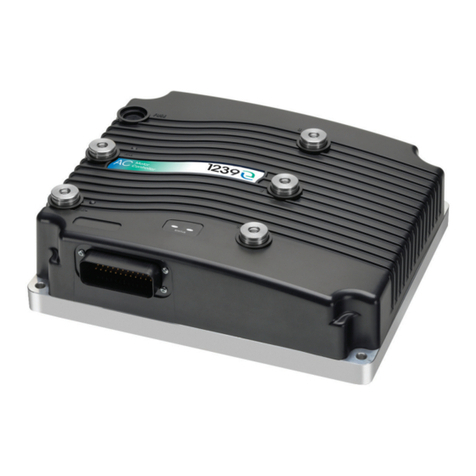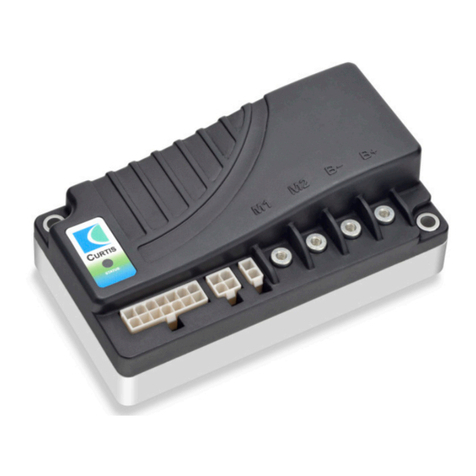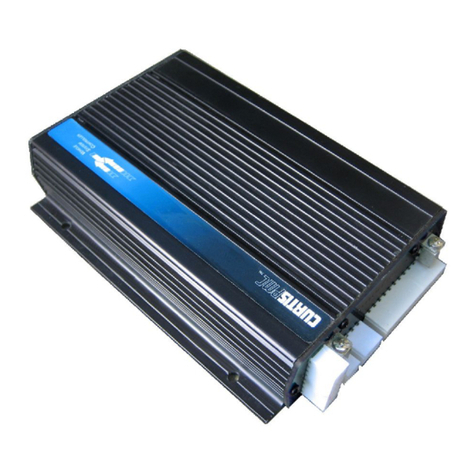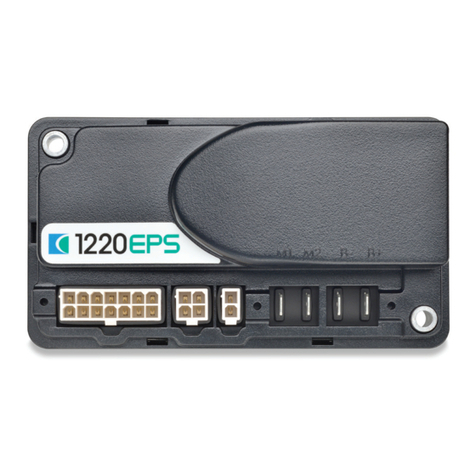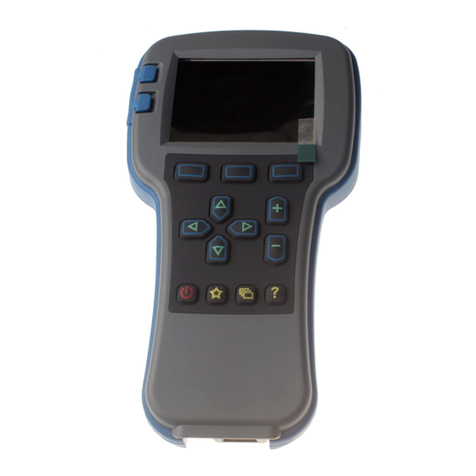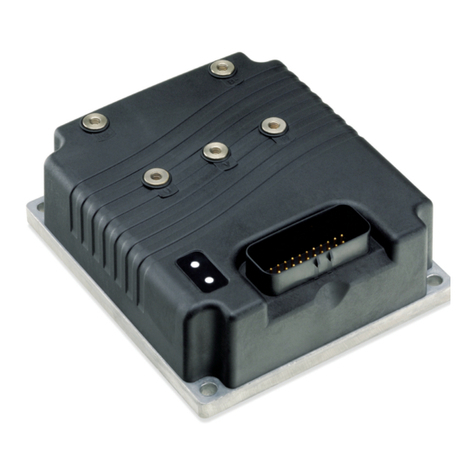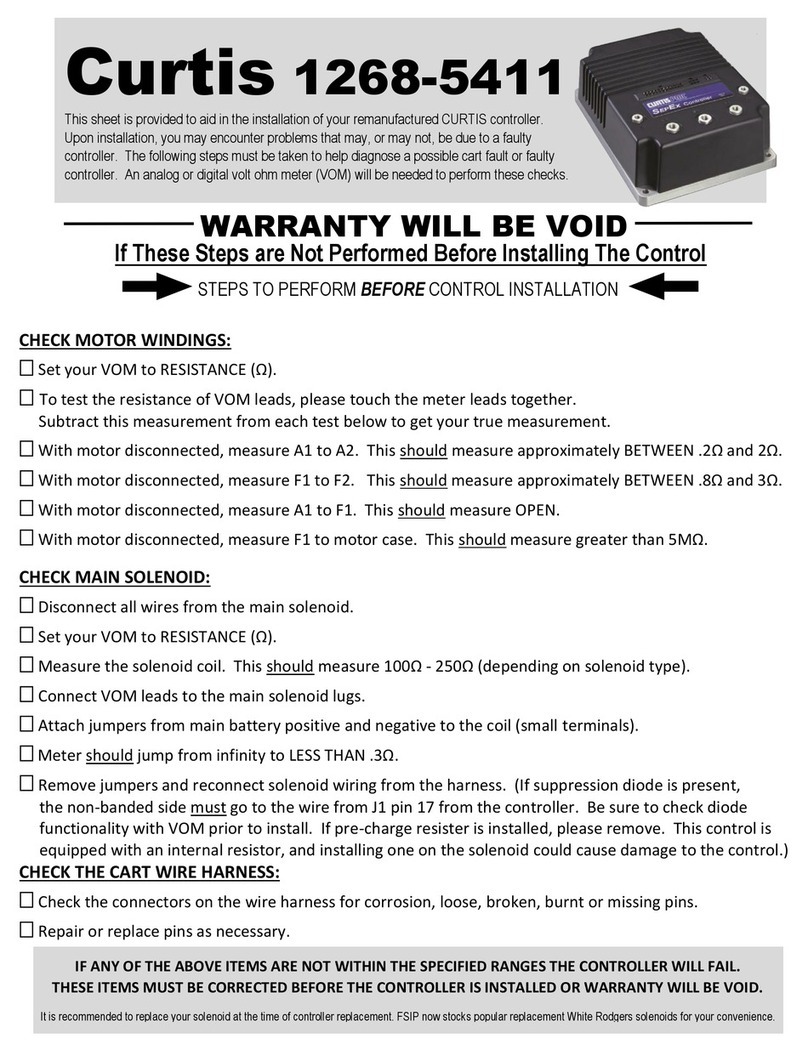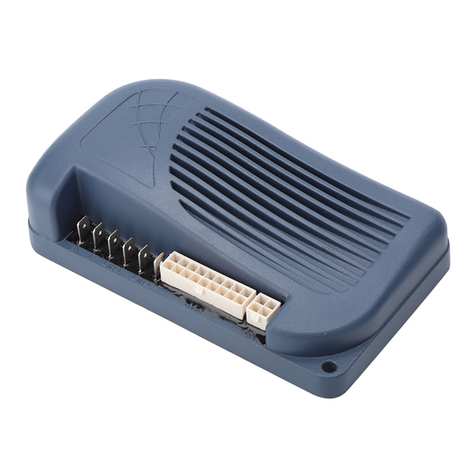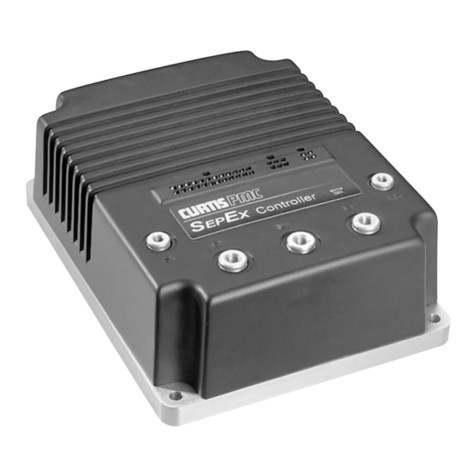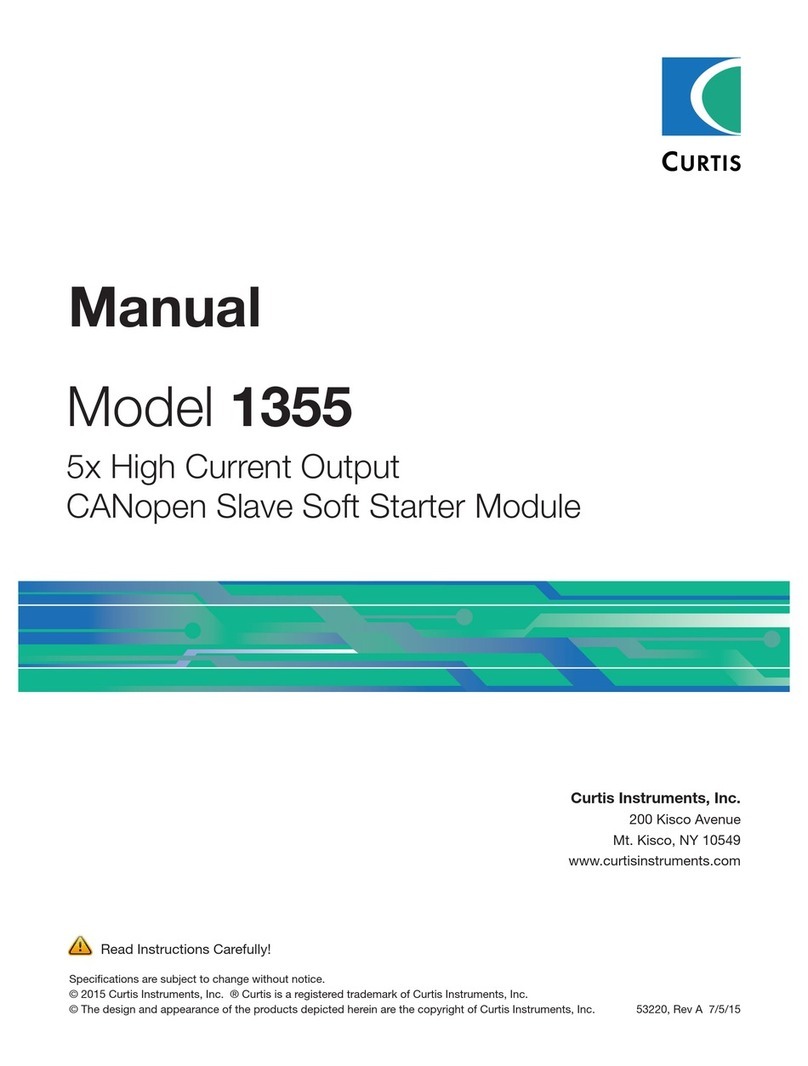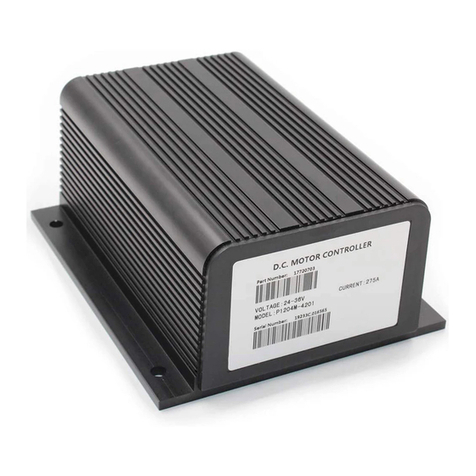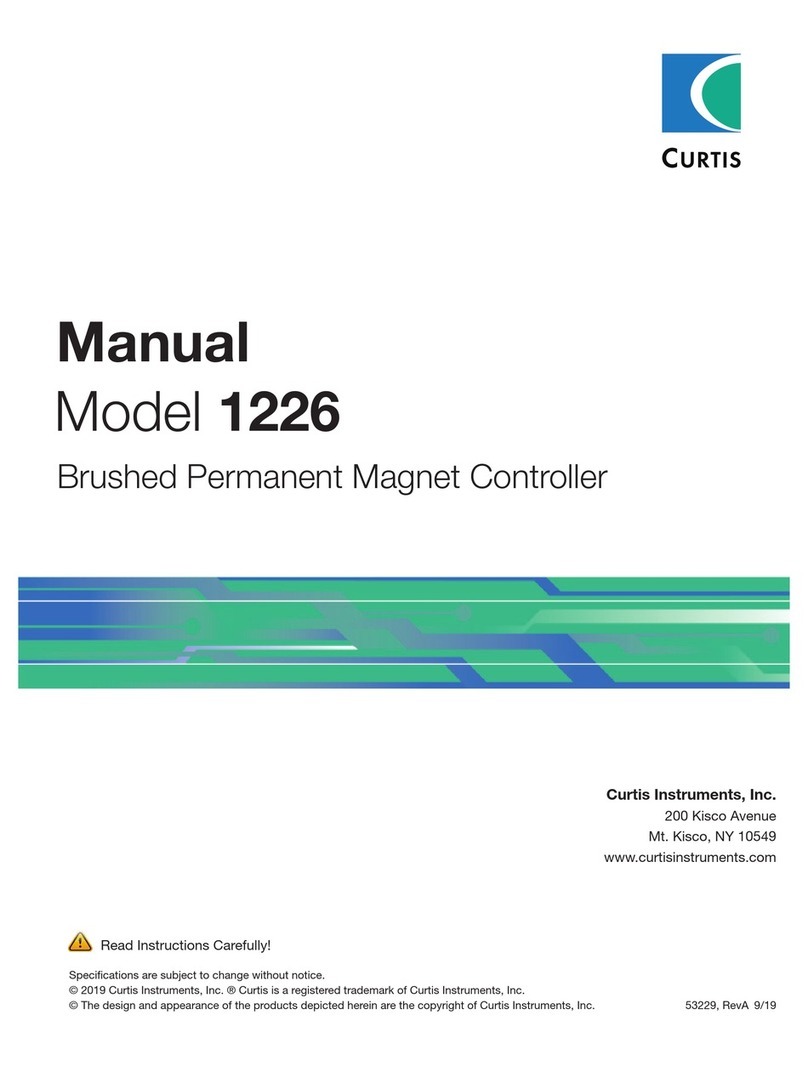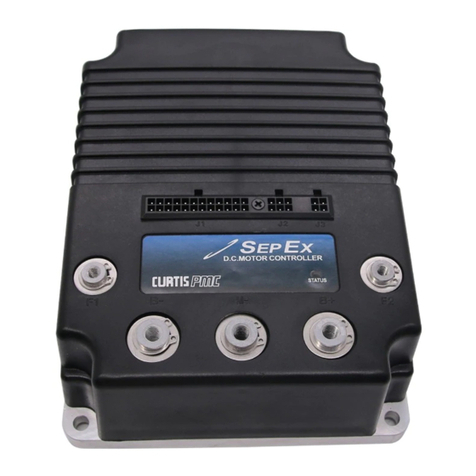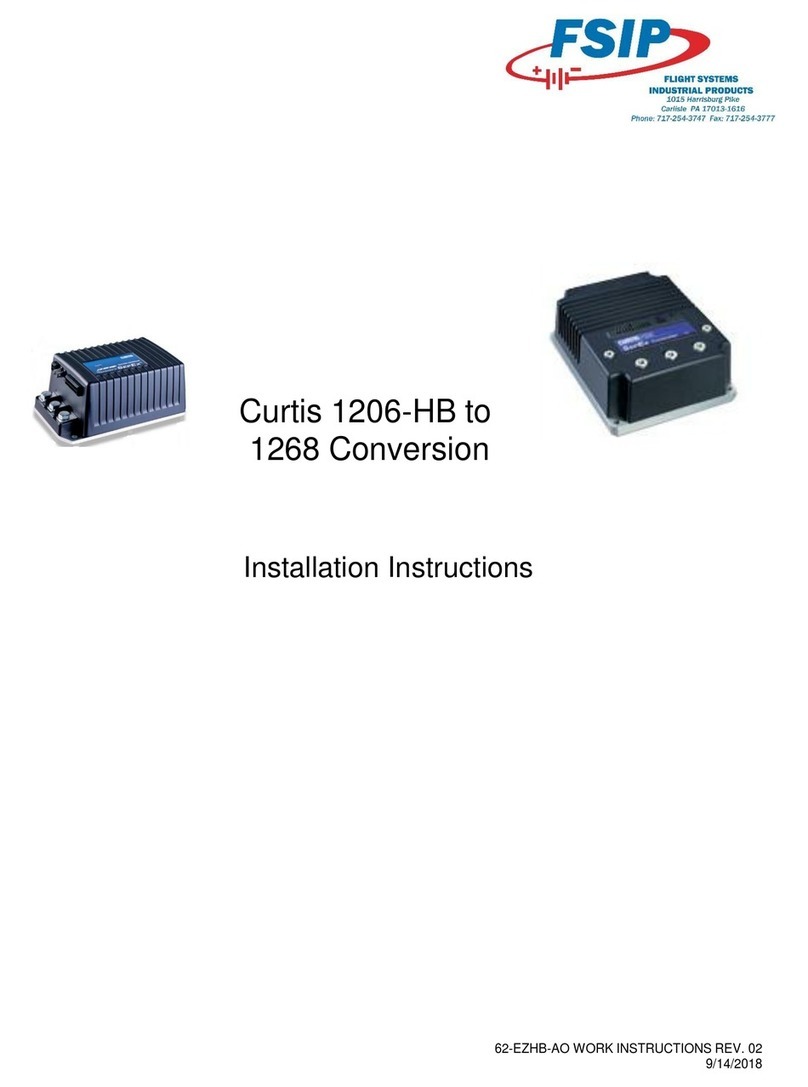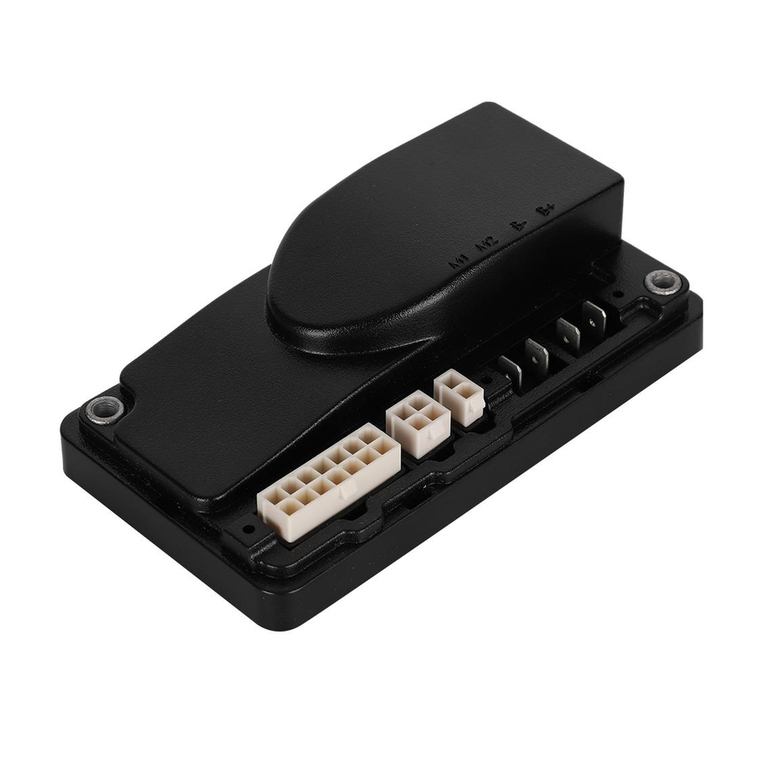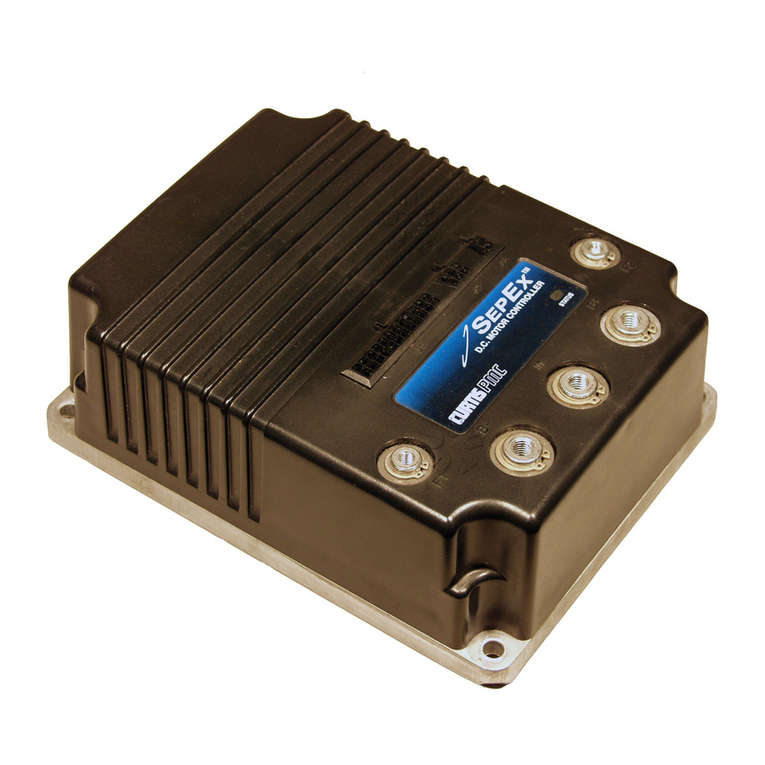4
Curtis PMC 1204/1205 Manual
THROTTLE
The standard controller throttle input is 0–5kΩ. Curtis PMC potboxes
(PB-5, -6, -9, -10) are designed to match this input. Some of these
potboxes have a built-in microswitch, eliminating the need to install a
separate pedal-actuated microswitch. Curtis PMC also offers a self-
contained footpedal unit (FP-2) that eliminates the need for fabricating
and installing a pedal-potbox linkage. Any potbox that provides a nominal
0–5kΩoutput (controller output begins at ≈300 ohms, full output is
≈4400 ohms) will work with the standard throttle input. For other types,
contact your Curtis office.
If a Curtis PMC potbox is used, it must be mounted so as to allow
connection between the potbox lever arm and the vehicle accelerator
linkage. The potbox mounting dimensions are shown in Figure 3. The
lever arm provides a series of holes so that the accelerator pedal “throw”
can be converted into the correct amount of potentiometer rotation. Use
of a second return spring on the pedal, in addition to the potbox return
spring, is required to prevent an uncontrollable full-on throttle input
(which could happen if there was a single spring, and it broke). If the self-
contained potbox spring is insufficient to return the pedal by itself, two
additional pedal return springs must be used.
It is also required that the accelerator pedal hit a mechanical stop at
its full-on position just before (≈1 mm [1/32"–1/16"]) the potbox lever
hits its own full-on stop. This mechanical stop will prevent the potbox
lever arm from bending if undue force is put on the pedal. Protection of
the potbox from water and dirt will help avoid problems of corrosion and
electrical leakage.
After the potbox has been mounted, operation of the pot can be
tested by measuring the resistance between the two wires with an ohm-
meter. With the pedal not applied, the resistance should be less than 50
ohms. As the pedal is applied, the resistance should rise smoothly until it
reaches a value between 4500 and 5500 ohms. Values below 4500 ohms
may cause a reduction in efficiency and top speed. Values above 7000
ohms indicate a defective potbox, and will cause controller shutdown.
Curtis PMC’s electronic throttle (ET-XXX), manufactured by Hardellet,
is designed for 24–36V systems, and can be used with any 1204/1205
controller having the 0–5V throttle input option.
HARDWARE INSTALLATION
